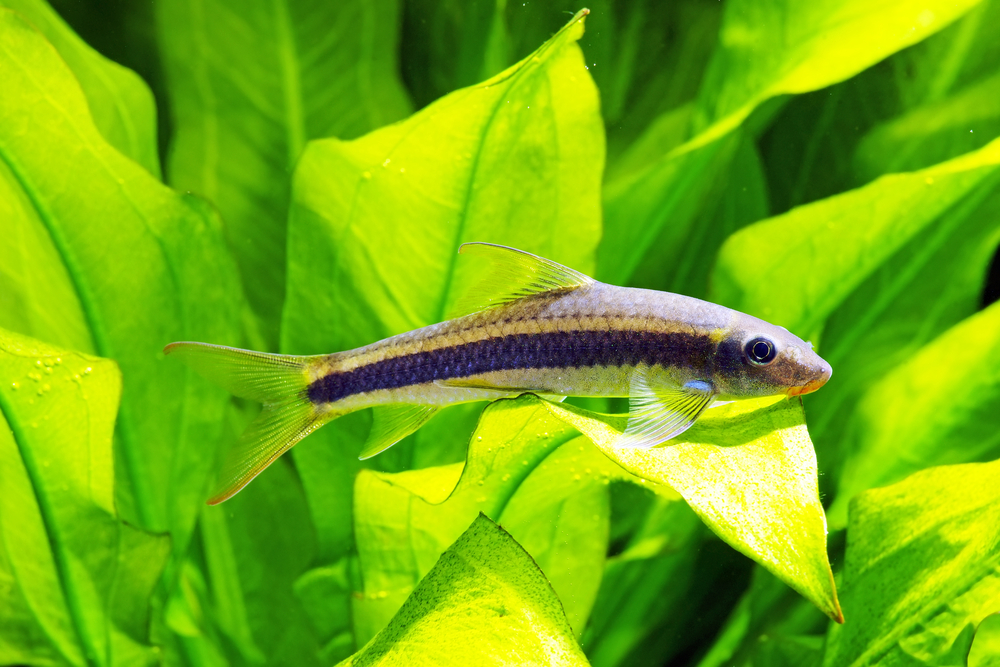Phone: +1 (903) 561-3142

Whether you’re a new aquarist or a seasoned expert, one problem you will likely face is algae. Now, there’s nothing wrong with a little algae in your tank. Algae occurs in any water-based environment, and can even be healthy in small quantities. Too much algae, however, can be hazardous for your aquatic family. That’s where […]
Whether you’re a new aquarist or a seasoned expert, one problem you will likely face is algae. Now, there’s nothing wrong with a little algae in your tank. Algae occurs in any water-based environment, and can even be healthy in small quantities. Too much algae, however, can be hazardous for your aquatic family.
That’s where the algae eaters come in! These critters are experts at removing algae from tanks, and with their unique habits, they can be great additions to your aquarium. With this in mind, here are 5 of the best algae eaters for your tank:

Peaceful and small, the Siamese Algae Eater is considered one of the best algae-eating fish available. Why? Well, this little fish isn’t picky when it comes to algae. These guys will eat a wide range of algae that other algae eaters avoid, including red and black beard algae. Along with algae, they must also be fed a vegetable and protein-based diet to stay healthy. The Siamese Algae Eater is great in community aquariums, and can be kept around live plants (they love eating algae off the leaves!).

The Otocinclus Catfish, or the Oto Cat is another peaceful fish that’s known for their algae-eating habits. They’re quite small, reaching only 2 inches in length, and do well in small community tanks. These little guys are talented at removing brown algae and new algae growths from tanks. You may find their eating habits entertaining too as they eat quickly from plant to plant. Like the Siamese Algae Eater, it can live among live plants and aren’t known for damaging reefs. Because of their small size and calm nature, the Oto Cat isn’t suitable around large cichlids.

It’s easy to spot the Cherry Shrimp in an aquarium. Their bright red color adds a vibrant spark to the average tank. And as a bonus, they also make incredible algae eaters—a fact that makes them popular with aquarists. Keep your aquarium’s temperature and chemical levels stable and the Cherry Shrimp will reward you with their algae-eating ability. They’re particularly great at finding algae in tricky spots that other algae eaters can’t. These critters also love eating leftover fish food. The Cherry Shrimp is most compatible with non-aggressive fish like the Oto Cat and Neon Tetra.

The Amano Shrimp is another great algae-eating shrimp option for aquarists. Their larger size makes them sturdier than the Cherry Shrimp and are able to defend themselves. This species loves to eat soft algae, decaying plants, and any leftover fish food on gravel. They love being in a community, often thriving in small groups, but must be kept away from aggressive fish like cichlids and goldfish.

The Mystery Snail or Common Apple Snail is a little detritivore that loves doing some of the cleaning on your tank. They are fond of eating different kinds of algae, decaying plants, and leftover fish food. Although they’re larger than most aquatic snails, these guys only grow up to 2 inches long, which makes them great for large or small community tanks. Mystery snails, like other snail species, rarely interact with their tank mates unless they’re being attacked. That’s why they must be kept with nonaggressive fish like Tetras or Guppies. They also thrive with most shrimp species.
The best type of algae eater for your tank all depends on your tank’s size and fish species. Keeping a peaceful community tank allows you to expand your options on the algae eaters. If you own a large peaceful aquatic family, you may even be able to keep enough algae eaters to clean your entire tank. It may not eliminate algae growth entirely, but it will help keep your tank in tip-top shape!
Is it time to clean your aquarium? Check out our blog, How To Clean Your Home Aquarium for our helpful tips!